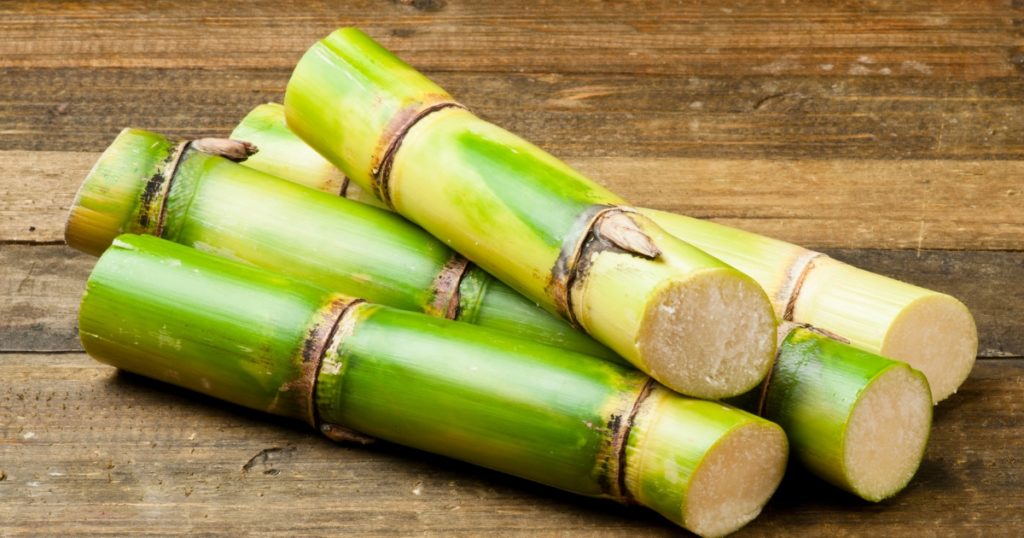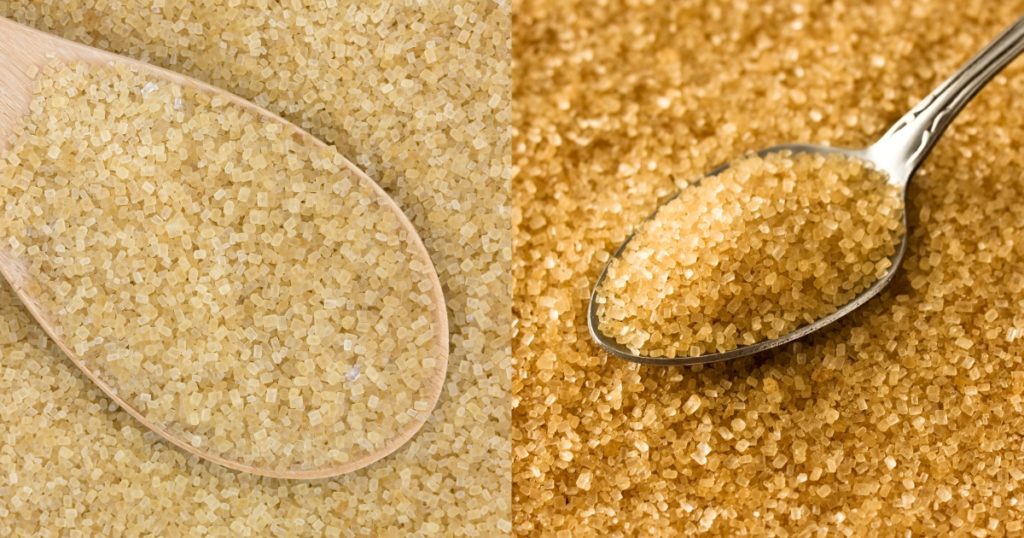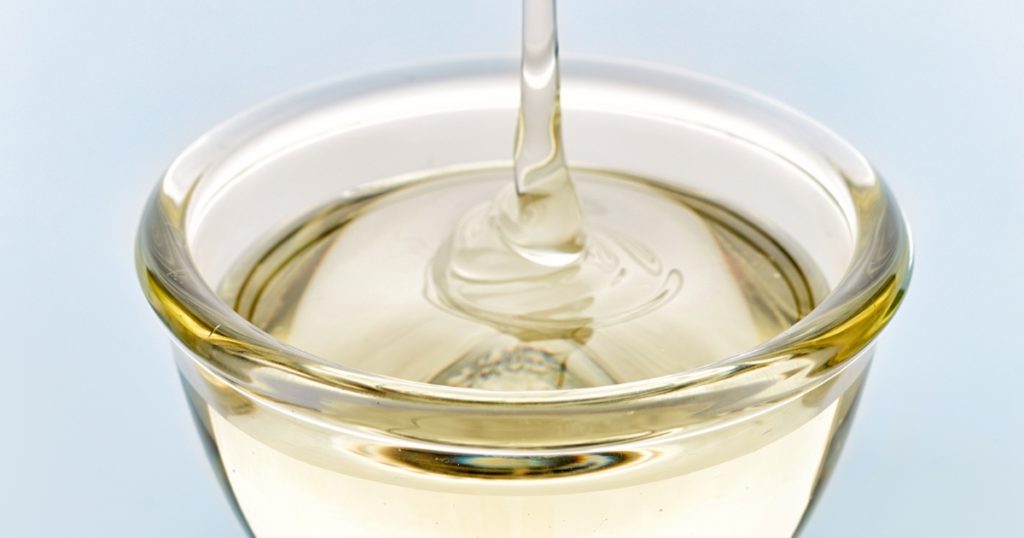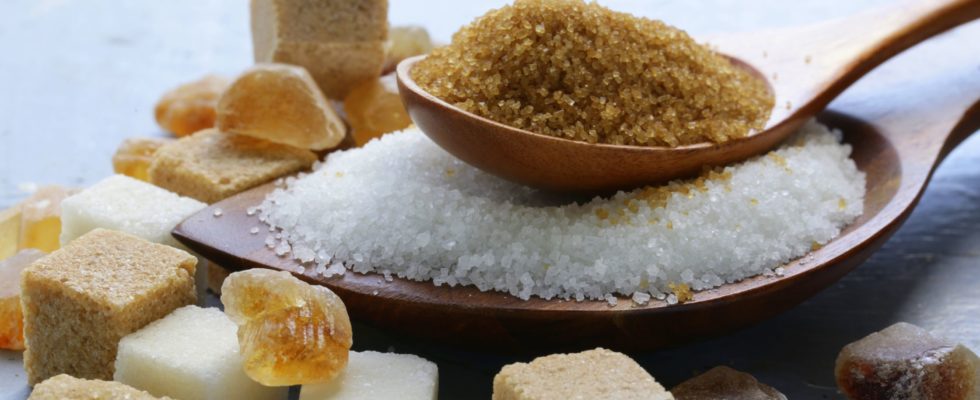As bakers, we use sugar. And I’m sure we all have that familiar granulated white sugar stocked in our respective baking pantries—but did you know that there are actually 11 types of sugar that are commonly used? Each of these sugars brings its own unique flavor, texture, and color to our creations, opening up a world of possibilities beyond just sweetness.
From the deep, molasses-rich tones of dark brown sugar to the delicate, melt-in-your-mouth quality of powdered sugar, understanding these varieties can elevate your baking from the everyday to the extraordinary. Whether you’re crafting a tender pound cake, a batch of chewy sugar cookies, or a glossy meringue, knowing the right sugar to use can make all the difference.
Let’s explore these 11 types of sugar and how they can can make a world of difference in your baking.
Note: This was originally posted last February 24, 2021. This was updated on February 24, 2024.
11 Types Of Sugar #1: Granulated Sugar

Granulated sugar, also known as table sugar or white sugar, is one of the common types of sugar. You make this from either sugarcane or sugar beets. You’ll also know this sugar by its fine, crystalline texture.
In baking, since it has a neutral taste, granulated sugar is a powerhouse ingredient, responsible for not just sweetening your favorite comfort food (i.e. pastries, cookes, cakes), but also contributing to their texture and structure. It aids in the creaming process, where you beat the sugar with fat (like butter) to incorporate air into the batter, resulting in a light and fluffy texture. Granulated sugar also helps in caramelization, giving baked goods a golden-brown crust and a subtle depth of flavor.
Mastering the use of granulated sugar can elevate your baking, making it a fundamental skill for any baker.
11 Types Of Sugar #2: Brown Sugar (Light And Dark)

Light brown sugar, a staple in baking, offers a golden brown color and caramel flavor to baked goods. It contains about 3.5% molasses, adding moisture and chewiness that you don’t get from white sugar.
Dark brown sugar, on the other hand, with nearly twice the molasses content at around 6.5%, brings a deeper color and more robust flavor to recipes. This difference means using any brand of dark brown sugars instead of light can significantly affect the moisture, taste, and color of your baked goods, making them darker and more intensely flavored.
Oh and cool trivia: if you need it but you don’t have any, you don’t have to look for any substitute for brown sugar; you can just make your own! Just mix 1 cup of white sugar with 2 tablespoons of molasses for homemade light brown sugar. For dark brown sugar, simply increase the amount of molasses.
11 Types Of Sugar #3: Confectioner’s Sugar

Confectioner’s sugar, also known as powdered sugar or icing sugar, is finely ground regular white sugar and sifted to make a smooth powdery texture. Cornstarch is then added to the powdered sugar to prevent it from caking.
This fine sugar dissolves easily, making it ideal for frostings, icings, and ensuring a tender texture in baked goods. You can use this to dust, say, donuts and other sweets for visual and flavor appeal. It’s also perfect for sweetening whipped cream without the grittiness of granulated sugar.
Want to make your own at home? Just mix 1 cup of granulated sugar and blend it with one tablespoon of cornstarch in a food processor. Voila!
11 Types Of Sugar #4: Cane Sugar

Cane sugar comes directly from the sugarcane plant and is less processed than granulated white sugar, retaining a bit of the natural molasses flavor and color. This sugar is known for its slightly larger crystals and a richer taste compared to standard white sugar.
In baking, cane sugar is a fantastic choice for bakers looking to add a hint of molasses flavor and a touch of richness to their creations without straying too far from the familiar results of white sugar. That’s especially true since it offers a subtle depth of flavor that enhances the overall taste of baked goods. It’s particularly good in recipes where a caramel-like sweetness is desired, such as in crumbles.
A note though: given its slightly larger crystal size, ensure it’s fully dissolved in mixtures to avoid a gritty texture, especially in beverages or fine pastries.Oh and one more cool note: Studies show that cane sugar contains high levels of polyphenols – potent antioxidants that can neutralize damaging free radicals in the body. Unlike regular white sugar, cane sugar also retains some vitamins and minerals from the sugarcane plant such as calcium, magnesium, and potassium. While moderate use is still advised, these nutrients give cane sugar a bit of an advantage over white sugars.
11 Types Of Sugar #5: Caster Sugar

Caster sugar is also known as superfine sugar. This sugar dissolves more quickly than regular granulated sugar, making it highly preferred for delicate baked goods like soufflés that need a certain mouthfeel. This type of sugar is also ideal for making meringues and cocktails, since it blends seamlessly into mixtures, ensuring little to no grittiness.
It’s a favorite for bakers who create exquisite desserts!
11 Types Of Sugar #6: Muscovado Sugar

Muscovado sugar is a minimally processed sugar type. It’s a sugar with high molasses content, a rich complex flavor, and a moist sandy texture—it will remind you of butterscotch, actually. Its strong flavor is much more pronounced than that of traditional brown sugars, making it a distinctive choice for both sweet and savory dishes.
Muscovado sugar shines in recipes where its robust flavor can stand out, such as in molasses cookies, gingerbread, and rich chocolate cakes. It adds depth and complexity to desserts that benefit from its bold molasses notes.
Its rich taste is also a great addition to savory sauces and marinades, offering a balance of sweetness with a hint of bitterness. It can transform barbecue sauces, glazes, and even slow-cooked meat dishes.
And of course, it’s perfect for coffee!
11 Types Of Sugar #7: Raw Sugar (Turbinado And Demerara)

Raw sugars like Turbinado and Demerara are less processed than white refined sugars, retaining a natural golden-brown color and a slight molasses flavor. Turbinado sugar has large, sparkling crystals and a subtle caramel taste, while Demerara sugar has slightly larger crystals and a richer flavor profile. Raw sugars retain a light coating of molasses, unlike fully refined sugars that have the molasses completely stripped away. This gives raw sugars their distinctive color and taste.
Turbinado sugar’s larger crystal size and mild flavor make it ideal for topping muffins, cookies, and crumbles, adding a crunchy texture and a hint of sweetness. On the other hand, Demerara sugar’s richer flavor and crunchy texture work well in coffee, tea, and on top of baked goods. It’s also excellent for creating a caramelized crust on desserts like crème brûlée or sprinkled over fruit before baking.
11 Types Of Sugar #8: Liquid Sugar

Want liquid sugar? Just dissolve sugar in water and get a clear, sweet syrup. This form of sugar is ideal for beverages, such as coffee and tea, but it also has its place in baking and cooking.
Its main advantage in the kitchen is its ability to blend seamlessly into mixtures, eliminating the need for dissolution that granulated or powdered sugars require. This makes it particularly useful for moist cakes, sweet breads, and smooth sauces and glazes where a consistent sweetness is crucial.
11 Types Of Sugar #9: Sanding Sugar

Bakers often use sanding sugar’s large, coarse crystals that sparkle and shine to add a decorative touch to baked goods. Unlike finer sugars, sanding sugar retains its texture and appearance even after baking, providing a beautiful, glittery effect on the surface of cookies, cakes, and pastries. Its availability in various colors further enhances its appeal, allowing for creative and vibrant decorations that catch the eye—perfect for holiday treats!
For best results, sprinkle sanding sugar on top of cookies, scones, or muffins just before baking. This ensures the sugar adheres well to the surface and maximizes its sparkling effect. You should also brush your bakes with a light egg wash to make the crystals stick better and stay in place.
11 Types Of Sugar #10: Pearl Sugar

Pearl sugar, sometimes called nib sugar, consists of large, white, opaque granules that retain their shape and do not melt during baking. You use this kind primarily for decoration, adding a crunchy texture and a visually appealing finish to baked goods. It has a coarse hard texture and is opaque in color.
Pearl sugar is perfect for professional or home bakers looking to add a distinctive crunch and decorative flair to their baked creations. Mix it into doughs for items like Belgian waffles or sweet breads for pockets of sweetness. You can also use pearl sugar as a finishing touch on frosted cakes, rolls, and buns for added texture and visual appeal.
11 Types Of Sugar #11: Coconut Sugar

You get coconut sugar from the sap of the coconut palm tree. Among the variety of sugars, people know coconut sugar for its lower glycemic index compared to regular white sugar, making it a popular choice among those looking for healthier sugar alternatives. It also contains trace amounts of vitamins, minerals, and phytonutrients, adding a slight nutritional edge.
Flavor-wise, coconut sugar offers a subtle caramel-like taste, which can enrich the flavor profile of baked goods with a deep, warm sweetness.
Exploring the Sweet Possibilities: What’s Next?
Now that you’re familiar with these common sugars, it’s time to put this knowledge into action. Each type of sugar offers unique properties and flavors that can transform your baking and cooking, elevating simple recipes into something truly special. Here’s how to take the next steps in your culinary journey:
- Experiment with Substitutions: Start by substituting different sugars in your favorite recipes. Use coconut sugar instead of white sugar for a healthier option, or try muscovado in place of brown sugar for a deeper flavor. Remember, the key is to consider the moisture content and flavor profile of each sugar type.
- Adjust Recipes to Taste: As you experiment, adjust recipes based on the sweetness and flavor of the sugar you’re using. Some sugars are sweeter than others, so you may need to use less to achieve the desired taste. Additionally, the unique flavors of sugars like coconut or muscovado can add an unexpected twist to classic dishes.
- Focus on Texture and Color: Consider how the sugar affects the texture and color of your baked goods. For example, pearl sugar adds a delightful crunch to waffles and breads, while sanding sugar gives a sparkling finish to cookies and cakes.
- Creative Decorations and Finishes: Use sugars not just for their sweetness but as decorative elements. Experiment with colored sanding sugars for festive occasions or use powdered sugar for a delicate, snow-like dusting on desserts.
- Moderation is Key: As we discover new types of sweeteners for baking, we must also consider their impact on well-being. Consume sugar moderately. Striking a balance allows us to enjoy sweets without excess. We may even wish to explore sugar substitutions (i.e. the ones used for keto recipes) to support dietary needs. There are ways to craft delicious recipes while being mindful of our bodies.
Final Thoughts
Learning about the different common types of sugar is the first step to transforming your baking. Each sugar adds its own flavor and texture, letting you get creative in the kitchen. Whether trying healthier coconut sugar or experiencing the molasses taste of muscovado, the right sweetener can take your recipes from good to great.
I encourage you to experiment with these unique sugars in your baking projects. It’s not just about new tastes – it’s about making even better desserts. So grab an apron and see what sweet ideas you can whip up!
If you want to improve your skills more, The Bailiwick Academy offers fun baking and cake decorating classes. Sign up at The Bailiwick Academy today and try one of our courses now!
—
Keep coming back to The Bailiwick Academy blog for more cooking and baking tips, kitchen tricks, and much more!


Pingback: Kakanin: A Must-Try Filipino Delicacy - The Bailiwick Academy
Pingback: Buffet Items: 10 That We Love and Miss Eating - The Bailiwick Academy
Pingback: Keto Dessert Foods to Satisfy Your Sweet Tooth! - The Bailiwick Academy
Pingback: Cashew Desserts That are Absolutely Delicious! - The Bailiwick Academy
Pingback: Unusual Food Combinations that Work! - The Bailiwick Academy
Pingback: Leftover Egg White Ideas [2022 edition] - The Bailiwick Academy
Pingback: Yummy Tarts: Six Flavors That You Should Definitely Try!
Pingback: Penco Sugar: Setting The Sugar Standard! - The Bailiwick Academy
Pingback: Difference Of Cupcake And Muffin - The Bailiwick Academy
Pingback: Different Kinds of Pizzas to Make: They're Must-Tries! - Online Baking and Cooking Classes - The Bailiwick Academy